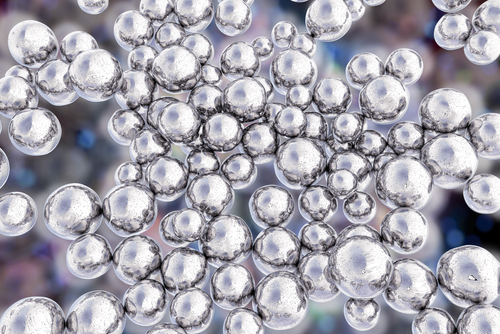Nanoparticles: Inorganic - Silver Nanoparticles
Silver Nanoparticles also called Nanosilver - Silver nanoparticles typically measures 25nm, and has optical, electrical, thermal and antimicrobial properties. Silver nanoparticles are used in the widest variety of nanotechnology products on the market today, according to the Project's Consumer Products Inventory.
Advantages:
- exhibit broad spectrum bactericidal and fungicidal activity that has made them extremely popular in a diverse range of consumer products, including plastics, soaps, pastes, food and textiles, increasing their market value.
- Nanosilver can also be utilized either in the textile industry by incorporating it into the fiber (spun). Silver impregnated scrubs offers the potential benefit of killing dangerous bacteria.
- Nanosilver can be used in a liquid form,such as a colloid (coating and spray). Nanosilver can be used as antimicrobial coatings in medical devices to reduce nosocomial infections at hospitals. Catheters are coated with nanosilver particles (Tran et al, 2013)
- Silver nanoparticles are used in biosensors and numerous assays for diagnostics, and also it can used in therapeutics, especially for treating burn wounds.
Limitations:
- further investigation is needed in this field to evaluate exactly the real impact of silver nanoparticles in commercial products to humans and animals.
Toolbox
- Tran, Q. H., Nguyen, V. Q., & Le, A. ( 2013). Silver nanoparticles: synthesis, properties, toxicology, applications and perspectives. Advances in Natural Sciences: Nanoscience and Nanotechnology 4 (3)
